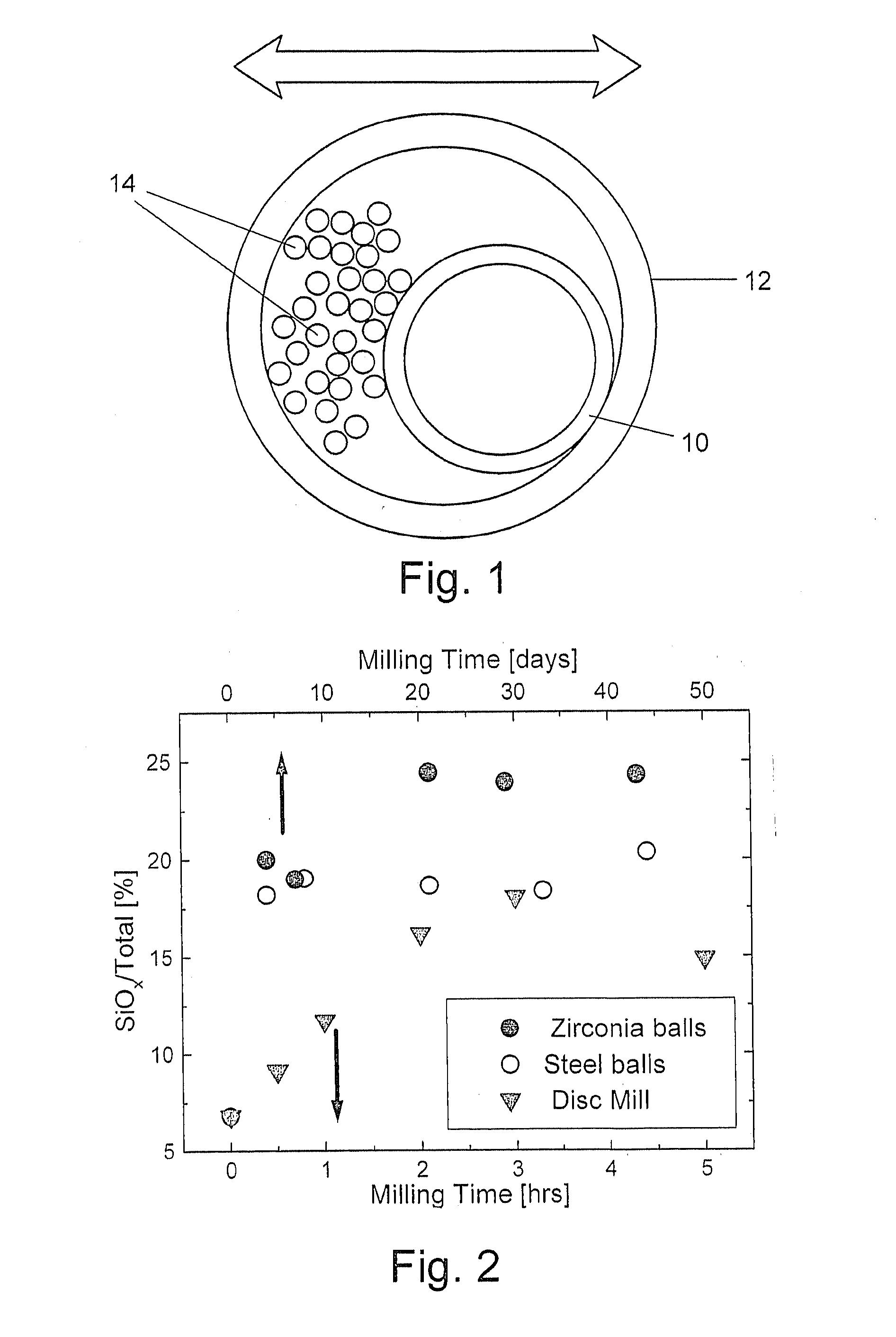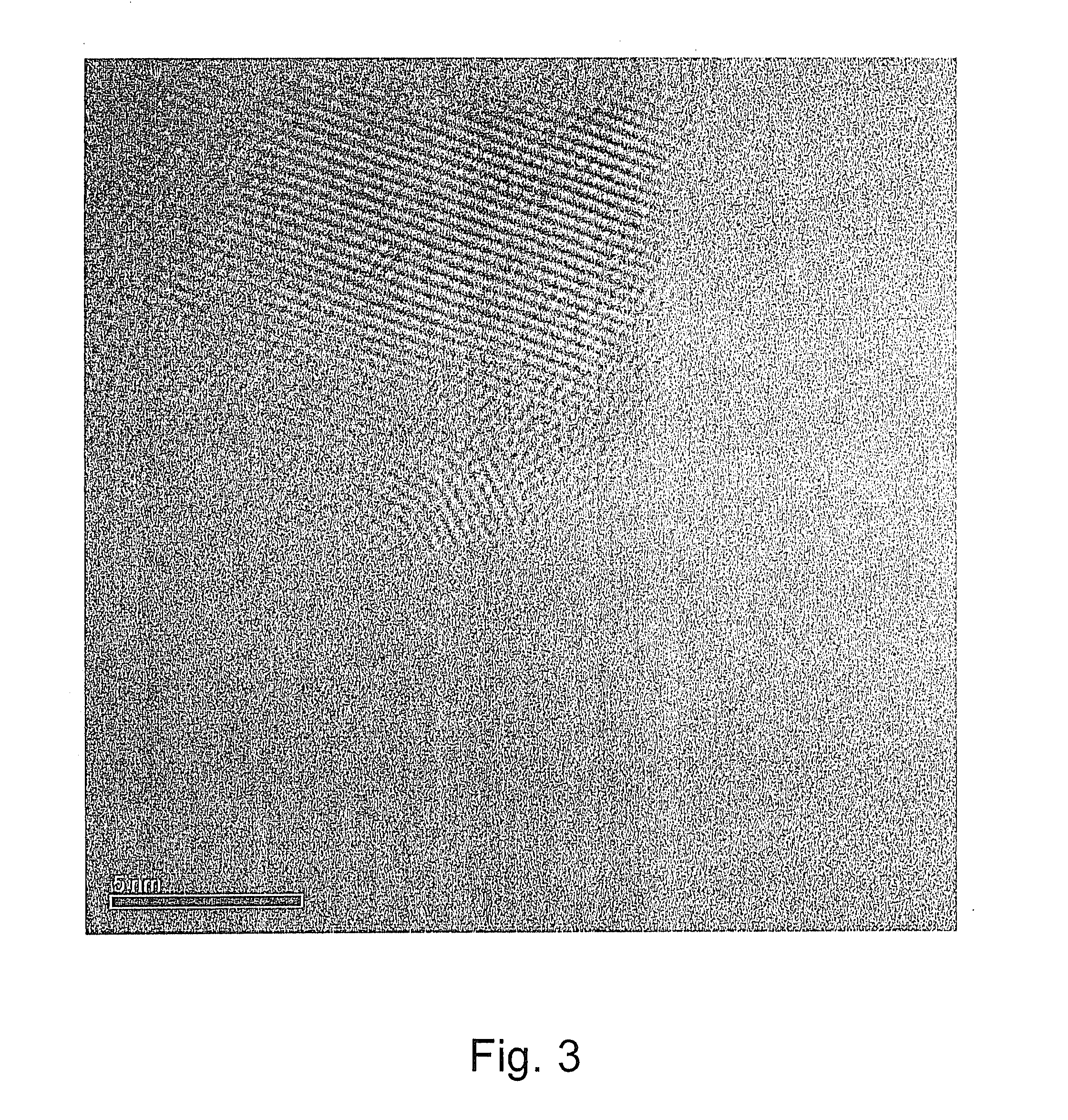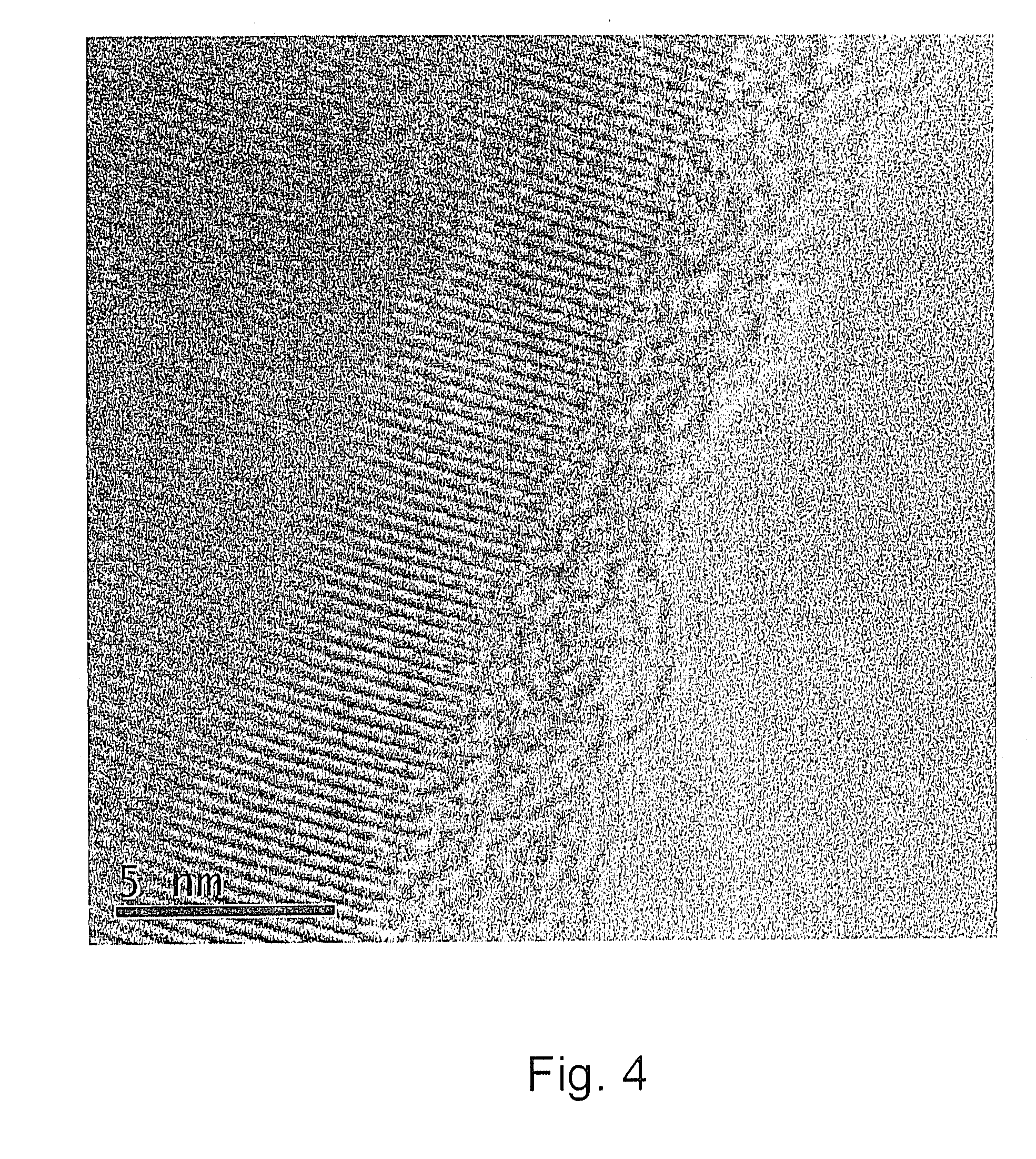Method of Producing Stable Oxygen Terminated Semiconducting Nanoparticles
a technology of semiconducting nanoparticles and oxygen, which is applied in the direction of arsenic compounds, cell components, gas-gas reaction processes, etc., can solve the problems of high technology options, unstable undecorated silicon surfaces, and high cost of nanotechnology
- Summary
- Abstract
- Description
- Claims
- Application Information
AI Technical Summary
Benefits of technology
Problems solved by technology
Method used
Image
Examples
example 1
[0053]The methods as envisaged in the first two embodiments have been applied using 51200 chrome steel milling media. As a reference material, a bulk material comprising 2503 grade silicon metal was dry milled, at room temperature, for extended periods in a laboratory ball mill with a neoprene drum, using zirconia balls as the milling media. Following established procedures, as the particle size was reduced, the size of the zirconia balls was reduced from 15 mm diameter, through 10 mm, to 5 mm.
[0054]In accordance with the first embodiment of the method, 2503 grade silicon metal was milled, in air, for periods up to five hours, in 30 minute intervals in a laboratory disc mill equipped with a 51200 chrome steel pestle and mortar. The temperature range was maintained between 100 and 160° C.
[0055]In accordance with the second embodiment, the same ball mill as used for milling the reference material was used to mill 2503 grade silicon metal, but using 15 mm diameter chrome steel balls as...
PUM
| Property | Measurement | Unit |
|---|---|---|
| temperature | aaaaa | aaaaa |
| temperature | aaaaa | aaaaa |
| temperature | aaaaa | aaaaa |
Abstract
Description
Claims
Application Information
 Login to View More
Login to View More - R&D
- Intellectual Property
- Life Sciences
- Materials
- Tech Scout
- Unparalleled Data Quality
- Higher Quality Content
- 60% Fewer Hallucinations
Browse by: Latest US Patents, China's latest patents, Technical Efficacy Thesaurus, Application Domain, Technology Topic, Popular Technical Reports.
© 2025 PatSnap. All rights reserved.Legal|Privacy policy|Modern Slavery Act Transparency Statement|Sitemap|About US| Contact US: help@patsnap.com



